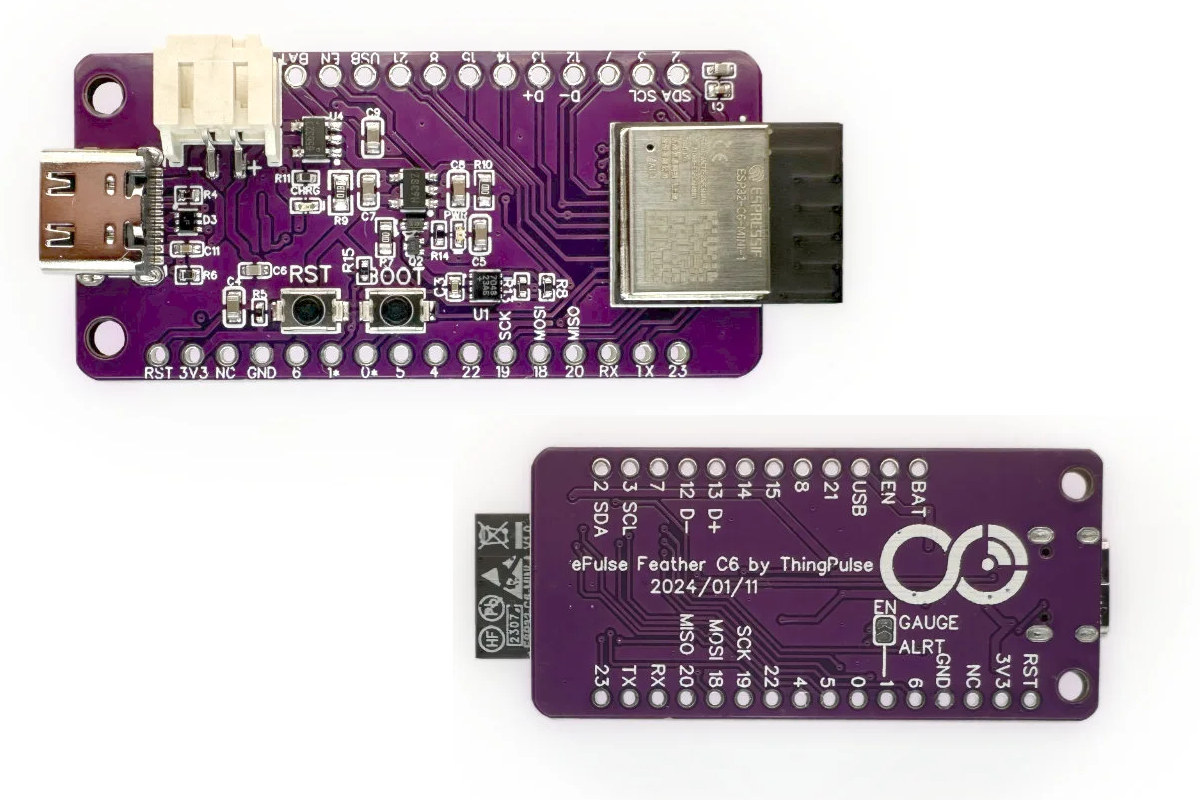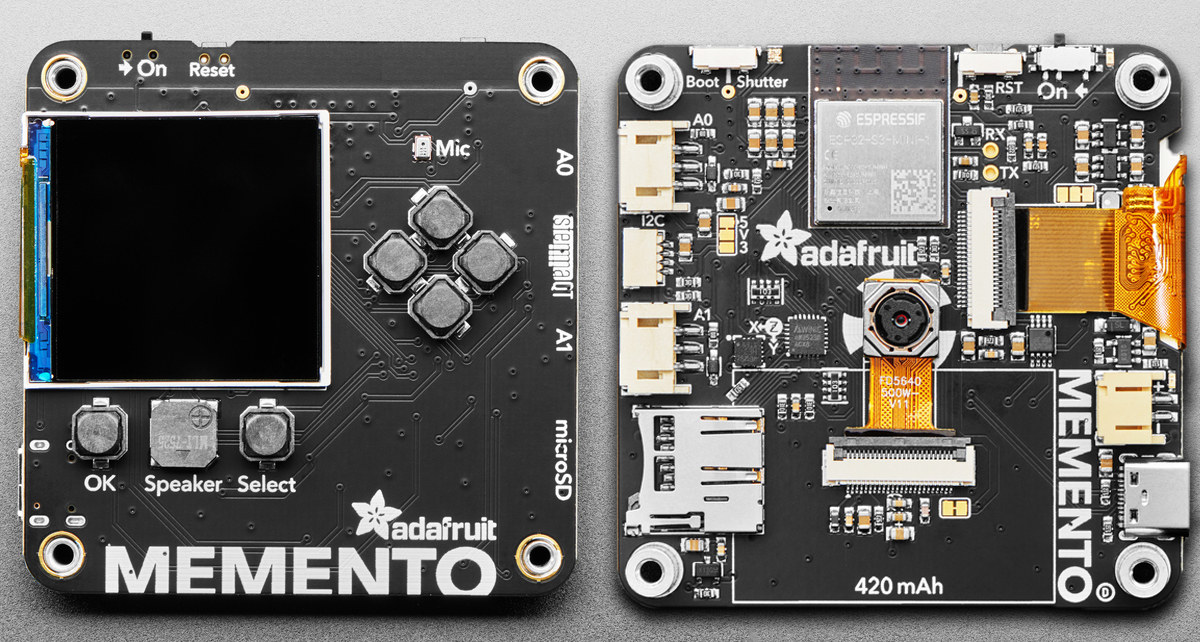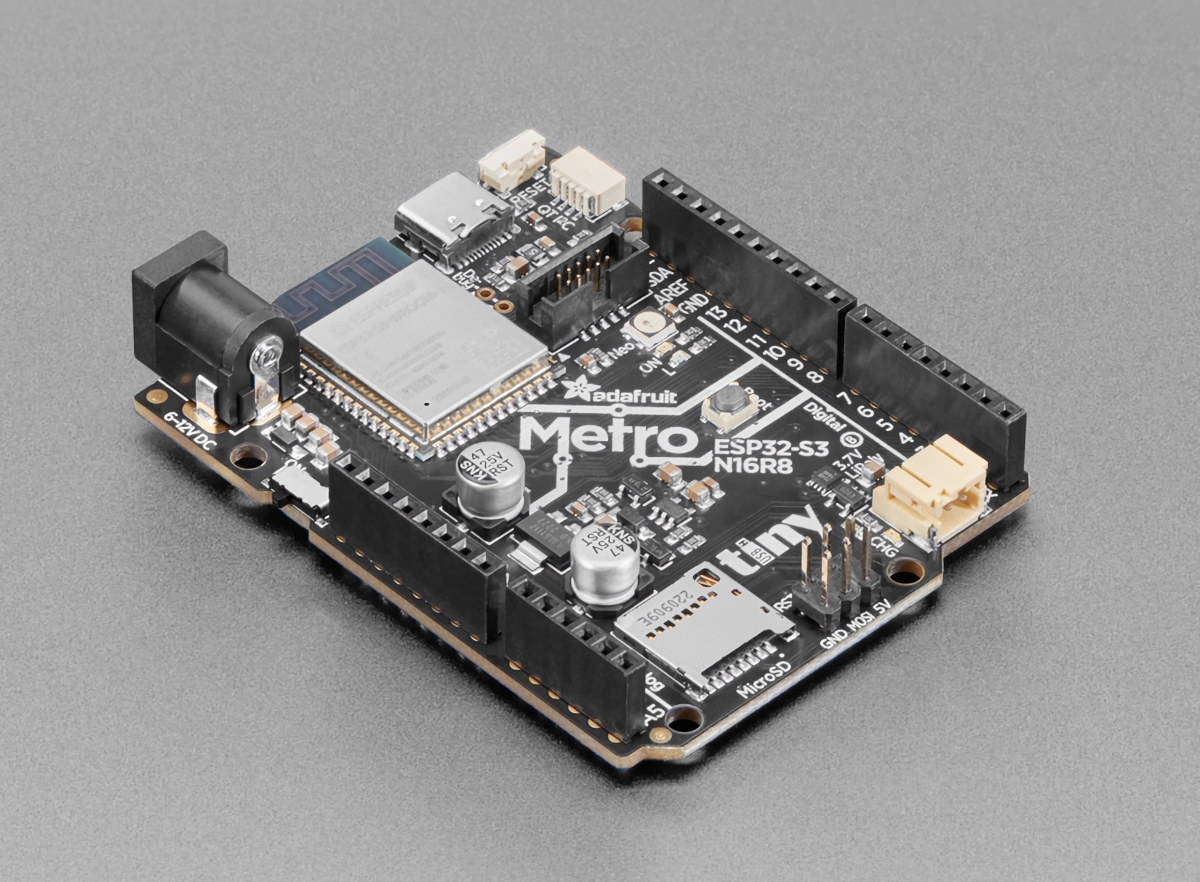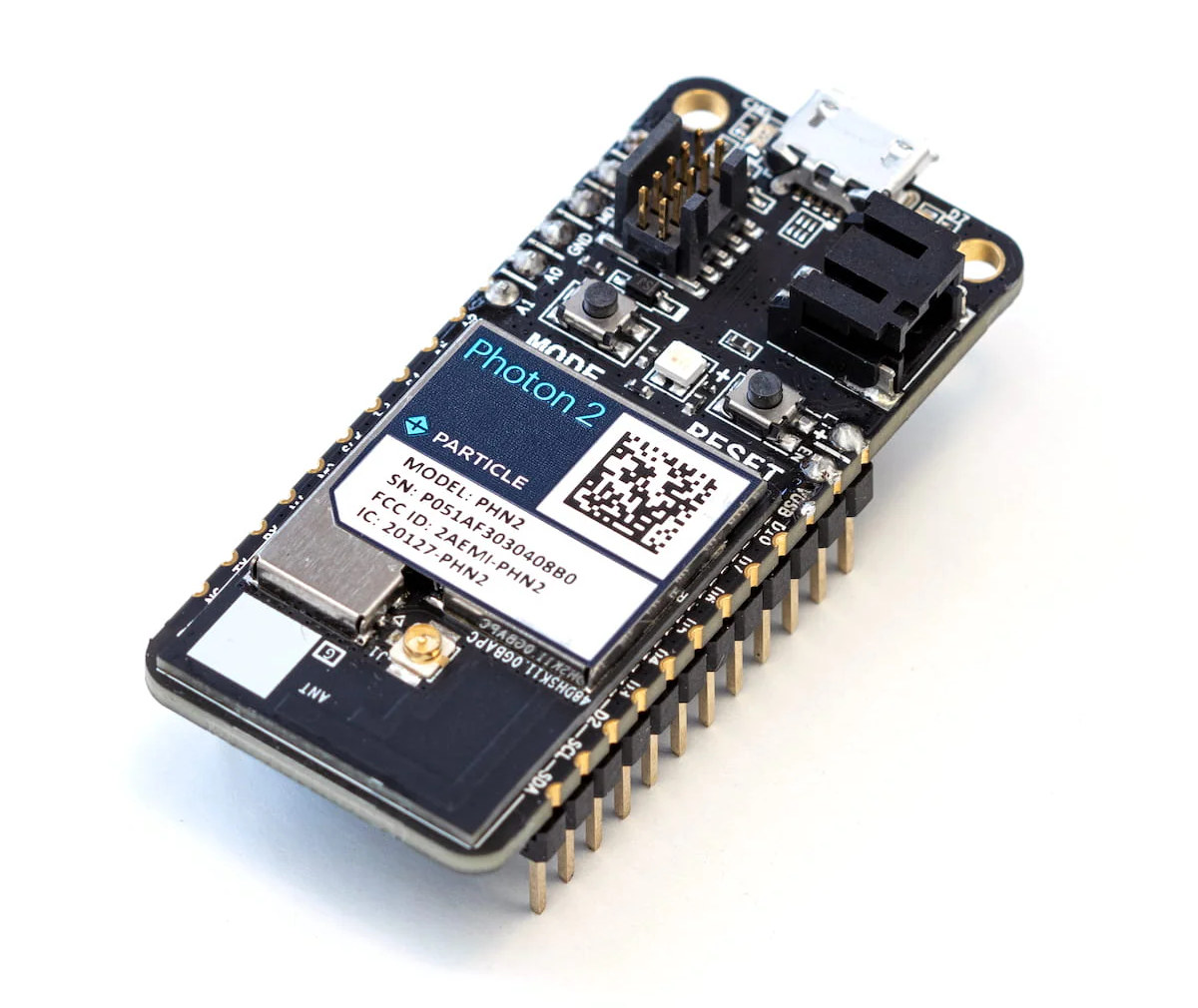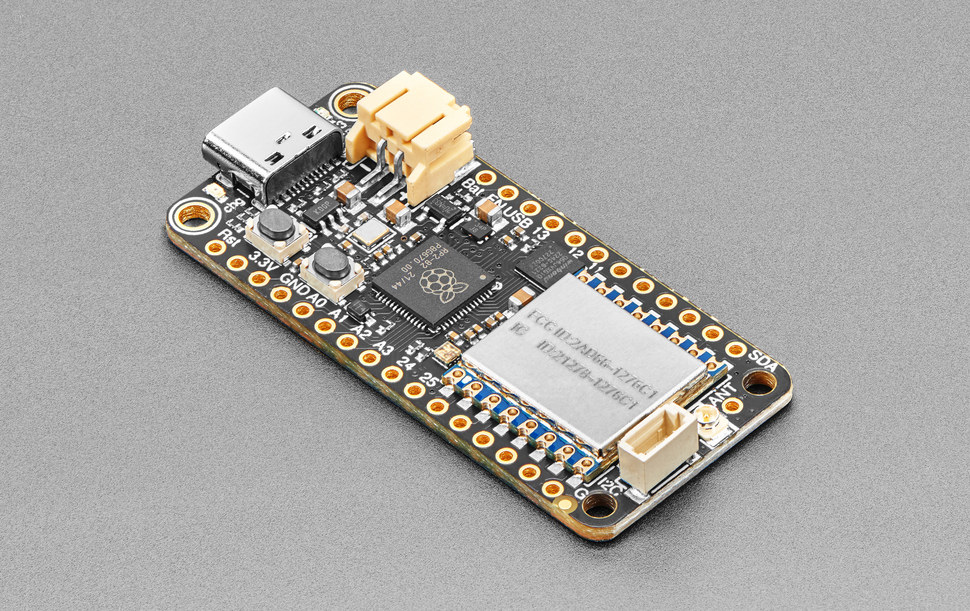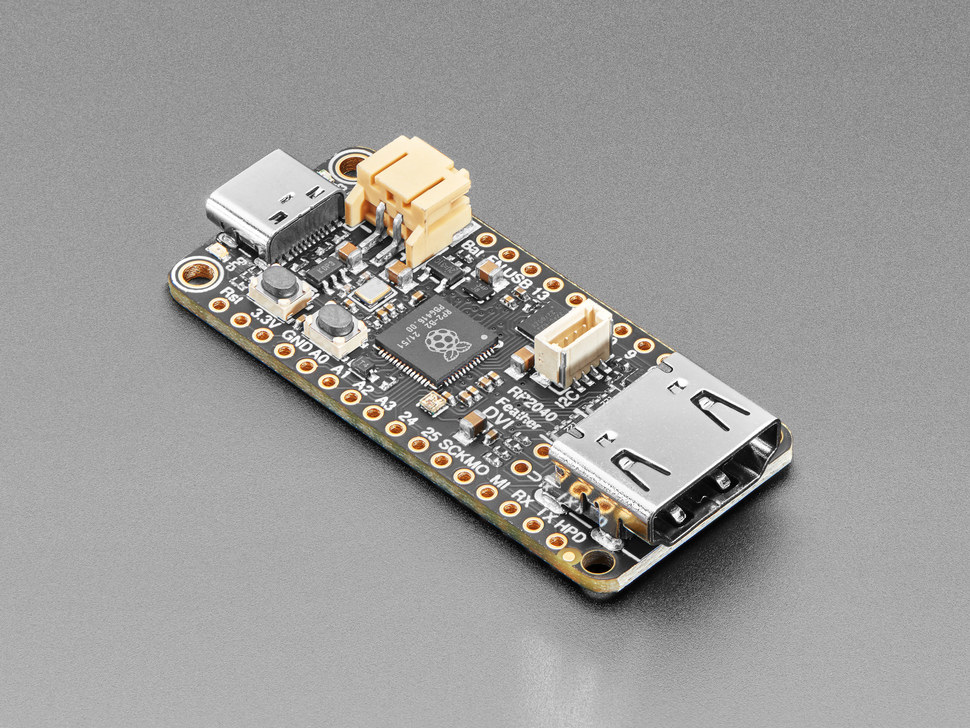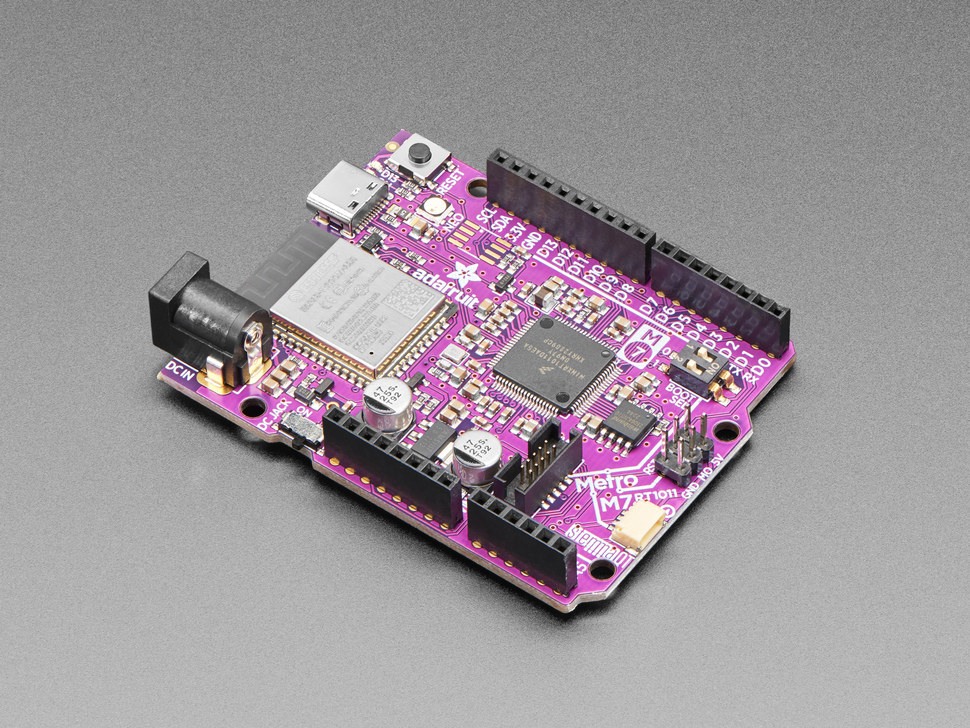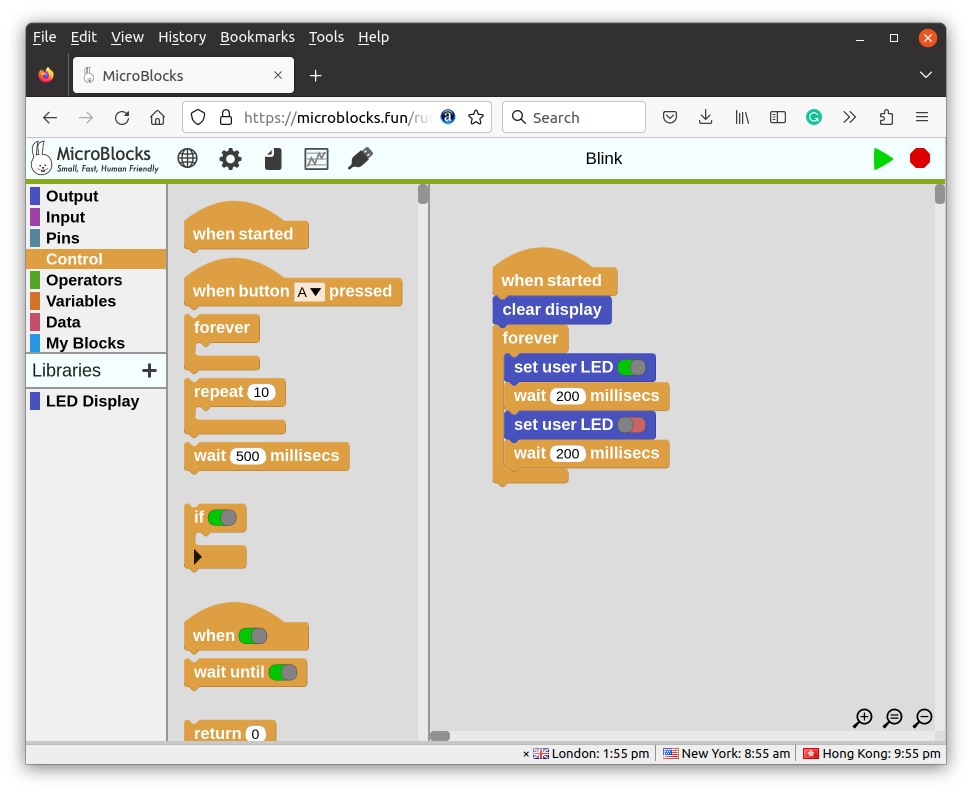ThingPulse ePulse Feather C6 is a new ESP32-C6 development board with WiFi 6, BLE5, Zigbee, Thread, and Matter connectivity that follows the Adafruit Feather form factor and supports LiPo battery charging through a charger IC and a fuel gauge. Just like its predecessor called ePulse Feather, the ePulse Feather C6 is optimized for low power consumption but replaces an ESP32-WROVER-E-N8R8 module but an ESP32-C6-MINI-1 with a 802.15.4 radio for Zigbee, Thread, and Matter, as well as 2.4 GHz WiFi 6 and Bluetooth 5.3 LE connectivity. ePulse Feather C6 specifications: Wireless module – ESP32-C6-MINI-1 SoC – ESP32-C6H4 32-bit RISC-V microprocessor up to 160 MHz with 320KB ROM, 512KB HP SRAM, 16KB LP SRAM, 4MB flash Wireless – 2.4 GHz WiFi 6 with Target Wake Time (TWT) support, Bluetooth 5.3 LE and Mesh, 802.15.4 radio with Zigbee, Thread, and Matter PCB Antenna USB – 1x USB Type-C port for power/charging and programming […]
MEMENTO is an ESP32-S3-based, CircuitPython or Arduino programmable DIY camera module
Adafruit’s new MEMENTO – Bare Board Camera module is powered by the ESP32-S3 and can be programmed with CircuitPython or Arduino. The module includes a camera with an OV5640 sensor which features auto-focus capabilities and the board includes a 1.54″ 240×240 Color TFT to display the images. Previously we have covered many ESP32-based camera modules like the TinyML-CAM, the Arduino Nicla Vision, TTGO T-Camera, and many other camera modules that feature the OV5640 sensor you can check those out if interested. Features and Specifications of the MEMENTO ESP32 Camera Module: Processing and Connectivity ESP32-S3 Module Dual-core 240MHz Tensilica processor 8 MB Flash, 2 MB PSRAM WiFi and BTLE capabilities Camera and Display OV5640 Camera Module 5MP sensor 72-degree view Autofocus JPEG encoder 1.54″ Color TFT Display with 240×240 resolution Storage – MicroSD card slot (SPI) Ports and Expansion Two Digital/Analog Stemma Ports – JST PH-3 connectors for A0, A1, power, […]
Adafruit Metro ESP32-S3 WiFi and Bluetooth IoT board comes in Arduino UNO form factor
Adafruit Metro ESP32-S3 is an IoT development board with ESP32-S3 WiFi and Bluetooth wireless SoC, 8 MB PSRAM, and 16 MB Flash that follows Arduino UNO – or Adafruit Metro – form factor. The board also comes with two STEMMA QT I2C connectors for further expansion, comes with a microSD card socket for storage, a JTAG header for advanced debugging, and supports various power options with 6-12V DC via a DC jack, 5V DC via a USB-C port, and a 2-pin connector for a LiPo battery plus the board integrates charging and battery monitoring chip. Adafruit Metro ESP32-S3 specifications: Wireless module ESP32-S3-WROOM-1 MCU – ESP32-S3 dual-core LX7 microprocessor @ up to 240 MHz with Vector extension for machine learning Memory – 8MB PSRAM Storage – 16MB SPI flash Connectivity – WiFi 4 and Bluetooth 5 with LE/Mesh PCB antenna Certifications – FCC/CE certification Storage – MicroSD card slot USB – 1x […]
Particle launches Photon 2 Realtek RTL8721DM dual-band WiFi and BLE IoT board, Particle P2 module
Particle has launched the Photon 2 dual-band WiFi and BLE IoT board powered by a 200 MHz Realtek RTL8721DM Arm Cortex-M33 microcontroller, as well as the corresponding Particle P2 module for integration into commercial products. The original “Spark Photon” WiFi IoT board was launched in 2014 with an STM32 MCU and a BCM43362 wireless module, but the market and company name have changed since then, and Particle has now launched the Photon 2 board and P2 module with a more modern Cortex-M33 WiFi & BLE microcontroller with support for security features such as Arm TrustZone. Particle Photon 2 specifications: Wireless MCU – Realtek RTL8721DM CPU – Arm Cortex-M33 core @ 200 MHz Memory – 4.5MB embedded SRAM of which 3072 KB (3 MB) is available to user applications Connectivity – Dual-band WiFi 4 up to 150Mbps and Bluetooth 5.0 Security Hardware Engine Arm Trustzone-M Secure Boot SWD Protection Wi-Fi WEP, […]
Adafruit Feather RP2040 with RFM95 LoRa Radio launched for low power long range IoT communication
Adafruit has designed a new variant of the Feather RP2040 board with the “Adafruit Feather RP2040 with RFM95 LoRa Radio” featuring a 900 MHz RFM95 “RadioFruit” module and following the “Adafruit Feather RP2040 with DVI Output Port” that we covered last week. The board ships with 8 MB of QSPI flash, supports USB-C or LiPo battery power, is offered in the familiar Feather form factor, and the built-in RFM95 module supports 433 MHz, 868MHz, and 915MHz frequencies, selectable by firmware, for global coverage. Adafruit Feather RP2040 with RFM95 LoRa Radio specifications: MCU – Raspberry Pi RP2040 dual-core Arm Cortex M0+ microcontroller @ 133 MHz with 264 KB RAM Storage – 8MB SPI flash RFM95 LoRa wireless module Semtech SX127x LoRa transceiver Frequency bands – License-free ISM bands: ITU “Europe” @ 433MHz and ITU “Americas” @ 900MHz. (CNXSoft: it looks 900 MHz here means 868 MHz (EU) and 915 MHz (US), […]
$15 Adafruit Feather RP2040 with DVI Output Port connects to your HDMI TV or monitor
“Adafruit Feather RP2040 with DVI Output Port” is another Raspberry Pi RP2040 board with an HDMI port that can output DVI video signal (no audio) to most TVs or monitors with an HDMI input port thanks to the PicoDVI project. The board builds upon the company’s Adafruit Feather RP2040 with the HDMI port adding just a few dollars. Adafruit Feather RP2040 with DVI Output Port specifications: MCU – Raspberry Pi RP2040 dual-core Arm Cortex M0+ microcontroller ~125 MHz (but it should be overclocked for DVI output) with 264 KB RAM Storage – 8MB SPI flash Video Output – 1x HDMI port for DVI output up to 320×240 or 400×240 resolution with 16-bit pixels, I2C signals to read EDID data, plus CEC and Utility pads broken out USB – 1x USB Type-C port I/Os Adafruit Feather compatible headers Up to 21x GPIOs 2x I2C, 2x SPI, 2x UART 4x 12-bit ADC […]
Arduino UNO compatible Adafruit Metro M7 features 500 MHz NXP i.MX RT1011 Cortex-M7 SoC
Adafruit Metro M7 is a development board based on a 500 MHz NXP i.MX RT1011 Arm Cortex-M7 crossover MCU that follows Arduino UNO form factor and integrates the ESP32-based “AirLift” WiFi module for wireless connectivity. The board also comes with 4MB QSPI storage, a few LEDs and buttons, a Qwiic connector for additional expansion beyond Arduino Shields, and an SWD connector for debugging. The board takes 6V to 12V DC input via a power barrel jack, but can also be powered through its USB Type-C port. Adafruit Metro M7 specifications: SoC – NXP iMX RT1011 crossover microcontroller with an Arm Cortex-M7 clocked at 500 MHz and 128KB SRAM/TCM Storage – 4MB of QSPI XIP Flash Wireless – AirLift WiFi co-processor with TLS/SSL support (better known as ESP32-WROOM-32) USB – 1x USB Type-C port for power and programming Expansion Arduino UNO headers for Arduino shields compatibility STEMMA QT connector for I2C […]
MicroBlocks is a visual programming IDE for 32-bit microcontrollers
MicroBlocks is a visual programming IDE for 32-bit microcontrollers currently supporting the BBC Micro:bit V1/V2, Calliope mini (aka the German Micro:bit), Adafruit Circuit Playground Express and Bluefruit, Raspberry Pi Pico and Pico W, and various other boards including ESP32 and ESP8266-based boards. I discovered MicroBlocks in the list of talks for FOSDEM 2023, and although it did not make it to my virtual schedule, I thought it was interesting to look into and write about it. In their upcoming FOSDEM talk, Bernat Romagosa and Kathy Giori refer to MicroBlocks as small, fast, and human-friendly with development guided by four guiding principles: liveness, parallelism, portability, and autonomy. The IDE is inspired by Scratch, and as such, looks very similar to other visual programming interfaces I have used over the years. You can launch MicroBlocks from Google Chrome or Microsoft Edge on a PC (not a mobile device) without having to install […]


